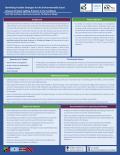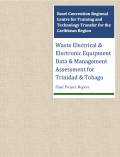
This study focuses on e-waste generation and management in Suriname. It identifies local stakeholders involved in the process, examines their relationships and assesses their contributions.
The analysis reveals that approximately 6,060 tons of e-waste were generated in Suriname in 2019, potentially influenced by the COVID-19 pandemic and increased demand for electronic devices. The low recycling rate is attributed to a lack of public awareness about recycling organizations and the costs associated with safe disposal. There is a need, therefore, for public awareness campaigns and economic incentives to promote proper e-waste management.
The study also evaluates the feasibility of a sub-regional dismantling facility. The first alternative was to locate it in Trinidad and Tobago, due to the high e-waste generation and level of industrialization of the country, in comparison to Guyana and Suriname. The second alternative was to locate the facility in Suriname, due to the lower labour and rental costs. Economic benefits were found to be positive when the facility was located in Suriname.




